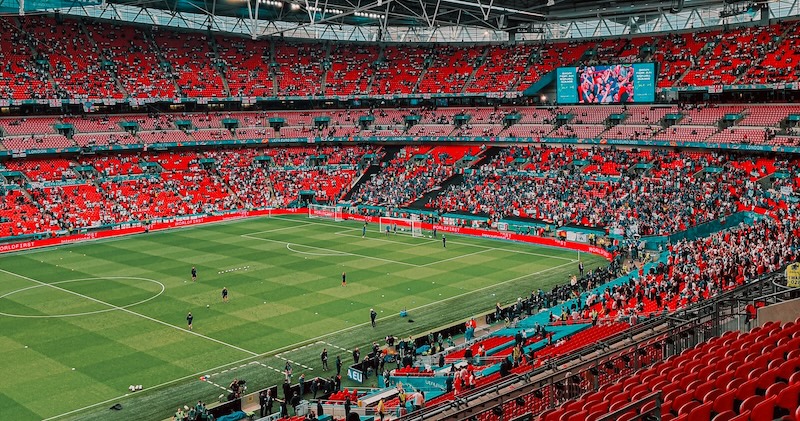Aspiring criminal barrister Harry Toy takes a look at changes to football legislation

Football is coming home… or is it? In July 2021, England faced Italy in the final of the UEFA Euros 2020. Perhaps, to some, the game is regarded as one of England’s greatest football success stories in recent times (even though England lost!). Yet, despite the cause for celebration, it took a turn when extreme violence ensued.
The main problem was the popularity of the event, when thousands of supporters without tickets forced their way into Wembley Stadium. Ultimately leading to the Baroness Casey Review, which described the day as “sad and disgraceful in equal measure” as well as “a source of national shame”.
Later on, in the report, after surveying several eyewitnesses, they reported that illegal drug use (mainly cocaine) had become widespread and was being taken in plain sight. 47% of those surveyed said they saw illegal drug use upon arrival at Wembley Stadium. At first blush, readers of the report and media coverage might be inclined to think: (1) that cocaine use amongst football fans is commonplace; (2) that there is surely sufficient law to prevent such from happening. It is these two components that form the rest of this article.
Cocaine use amongst football fans
Cocaine, once upon a time, was not the primary drug of choice for football groups as it used to be ecstasy (otherwise known as Methylenedioxymethamphetamine or MDMA). However, fans turned to cocaine following a decline in its purity and then, subsequently, its price. Nowadays, the drug is firmly rooted within football culture, perhaps because of cocaine’s unique short-term effects, which provide a sense of euphoria and confidence . This is certainly the view of one Football Association (FA) Representative who said in Bandura’s et al research that:
“Cocaine use among football fans can give them a sense of euphoria and courage, the same as four, five, six, seven pints in a much smaller time frame”.
In that same vein, Newson’s study indicates that the consumption of cocaine amongst football fans is higher than the national average, and there is a link between cocaine and violence. Whilst it is acknowledged within the literature that cocaine cannot be the sole cause of violence, as there may be other variables, for instance, individual characteristics, the culture, or even poly-substance abuse, cocaine remains a risk factor for the cause of violence.
Want to write for the Legal Cheek Journal?
Find out moreIs the law sufficient to deal with the matter?
Well… prior to the events on 11 July 2021, the law was not broad enough to cover drug-related offences as ‘football related offences/disorder’ under Schedule 1 of the Football Spectators Act 1989. This schedule provides an exhaustive list of ‘relevant offences’ that will be subject to a football banning order. While, at the time, the Act did include numerous offences relating to alcohol and public order offences — it plainly ignored drug offences. As Daniel Greenberg CB put it in the Baroness Casey report:
“It is difficult to see any policy rationale for the very limited extent to which drugs-related disorderly behaviour is addressed by the existing FBO regime… given such disorder is as likely to be fuelled by drugs as by alcohol.”
With this being a core recommendation of the report, The Football Spectators (Relevant Offences) Regulations 2022 was passed, which incorporated possession of a controlled drug (Section 5 of the Misuse of Drugs Act 1971) and the supply of controlled drugs (Section 4(3) of the Misuse of Drugs Act 1971) into the Schedule 1 of the Football Spectators Act 1989.
What is a football banning order?
A football banning order is a complex piece of legislative drafting, with three statutory sections under the Football Spectators Act 1989. The first, pursuant to Section 14A, is a football banning order where the individual commits a ‘relevant offence’ (as contained in Schedule 1 of the Football Spectators Act 1989). The second, pursuant to Section 14B, is a banning order made in respect of a complaint by a relevant chief officer (e.g. a chief officer of police for any police force or a chief constable of the British Transport Police). The third, pursuant to Section 22 provides a banning order much like Section 14A yet applies to incidents that occur abroad, similar to those offences contained within Schedule 1.
The rationale for such banning orders was to be a deterrent to football violence. Despite this, there has been a rapid shift towards a more punitive approach. As Pearson and Scott assert:
“Football fans were once again guinea pigs for the development of novel legal instruments to attempt to manage social problems.”
Since their inception there have been persistent updates to Football Banning Orders, most recently under Section 192 of the Police, Crime, Sentencing and Courts Act 2022. This legislation changed the circumstances under which a Section 14A banning order should be issued. Previously, this was connected to regulated football match where the court must be satisfied that the imposition of the banning order will prevent violence or disorder. Now, the wording has changed to:
“The court must make a banning order in respect of the offender unless the court considers that there are particular circumstances relating to the offence or to the offender which would make it unjust in all the circumstances to do so.”
Here, the law has taken a huge step away from how the Act was originally intended. The aforementioned change is only one of many since its inception, which led James and Pearson to label these updated football banning orders as ‘super-FBOs’.
To that end, what extent should and does a football banning order apply under this new regime? At present, there is little appellate court authority to determine this, but to take previous authority, it seems that there may be a requirement to show that the offence in question has a connection to a football match (R v Doyle (Ciaran) and Others [2012] EWCA Crim 995). Therefore, how long before or after a football match does a relevant offence need to be in order to be subject to a football banning order? Similarly, in that same light, how close to a football match does a relevant offence need to be?
As a strict rule of thumb, it would be very difficult to say that all relevant offences in and around a football match will be subject to a football banning order. As it is clear from the wording of the new regime, each case will turn on its own facts. Yet the principle of connection still, in many respects, holds some water — although the statute in its new regime does not explicitly state this requirement.
With this conceptual boundary as to where and when a football banning order should take place, policy and policing measures to contain football disorder are informed by the Home Office statistics, which are at best lacklustre. First, they only consider the top end of the football pyramid — this does not address the full extent of football up and down the country. Second, in the context of drugs, the legislative change is still fairly recent, and it is difficult to suggest from a statistical point of view the extent of the problem.
Harry Toy is a first-class Law with Criminology graduate from Nottingham Trent University. He is an aspiring criminal barrister and has recently completed the BTC at Nottingham Law School with a scholarship for Academic Excellence. His LinkedIn account can be found here.
The Legal Cheek Journal is sponsored by LPC Law.


 (
( (
(

